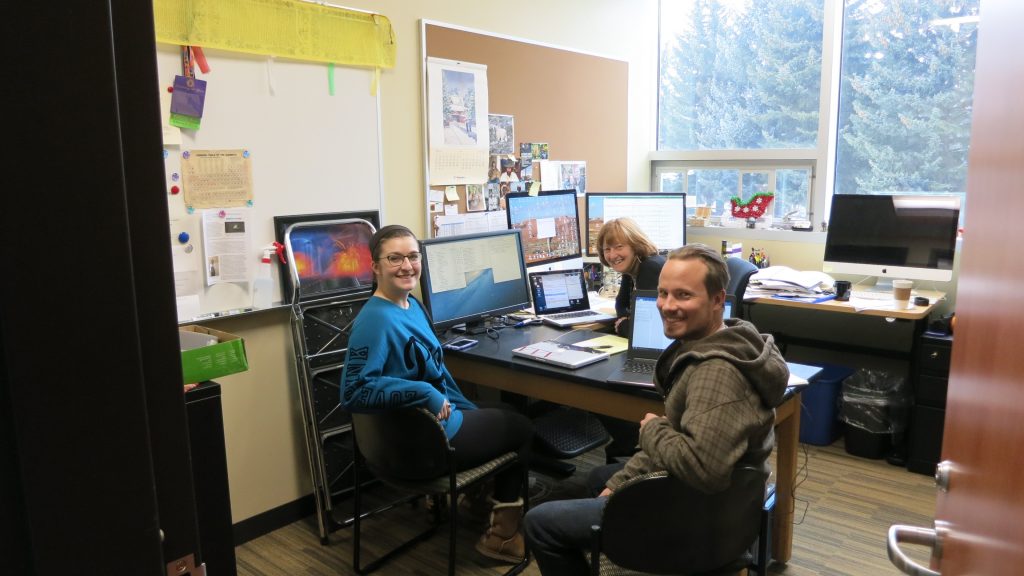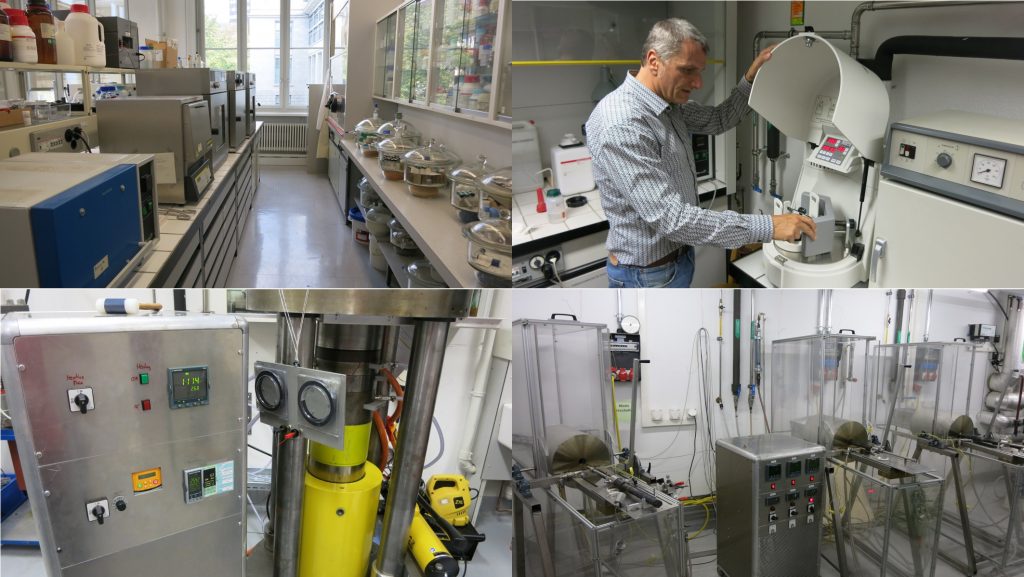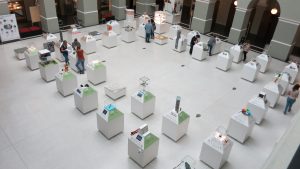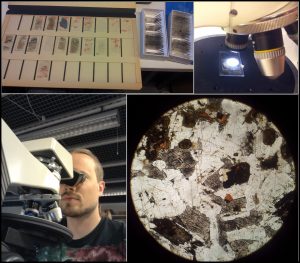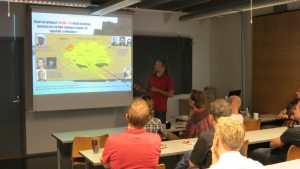 One run on Magma Chamber Simulator takes about 30 to 45 minutes and the results are printed on multiple worksheets as megabytes of numerical data. My mission is to find the most important markers of compositional changes in the magma system in the midst of all this and identify initial variables that have the most effect on the results. Before diving into the intrusions, I have tested the program with basalts that have erupted from these magma chambers. Fractional crystallization (FC), fractional crystallization + assimilation (AFC), and fractional crystallization + assimilation + recharge (RAFC) models all result in considerably different compositional evolution for the residual melt. What processes would you think provide the best-fitting results for the geochemical composition (in this case, cerium, Ce, and magnesium as an oxide, MgO) of the basalts in the diagrams below?
One run on Magma Chamber Simulator takes about 30 to 45 minutes and the results are printed on multiple worksheets as megabytes of numerical data. My mission is to find the most important markers of compositional changes in the magma system in the midst of all this and identify initial variables that have the most effect on the results. Before diving into the intrusions, I have tested the program with basalts that have erupted from these magma chambers. Fractional crystallization (FC), fractional crystallization + assimilation (AFC), and fractional crystallization + assimilation + recharge (RAFC) models all result in considerably different compositional evolution for the residual melt. What processes would you think provide the best-fitting results for the geochemical composition (in this case, cerium, Ce, and magnesium as an oxide, MgO) of the basalts in the diagrams below?
—
Yksi Magmakammiosimulaattorin ajo kestää noin 30–45 minuuttia ja tulokset tallentuvat numeerisessa muodossa useiden megatavujen kokoisiin tiedostoihin. Tehtävänäni on löytää tämän kaiken keskeltä kaikkein merkittävimmät koostumuksellisten muutoksien indikaattorit ja tunnistaa alkumuuttujat, jotka vaikuttavat eniten tuloksiin. Ennen intruusioiden maailmaan sukeltamista olen testannut mallien toimivuutta minulle tuttujen, näistä magmakammioista purkautuneiden, basalttilaavojen kanssa. Pelkän kiteytymisen (FC), kiteytymisen ja sivukiven assimilaation (AFC) sekä kiteytymisen, sivukiven assimilaation ja uusien magmapulssien (RAFC) mallit kaikki tuottavat selkeästi erilaisen koostumuksellisen kehityksen kivisulalle. Mitkä prosessit sinun mielestäsi johtavat tuloksiin, jotka eniten muistuttavat alla esitettyjen basalttien kemiallista koostumusta (tässä tapauksessa cerium, Ce, ja magnesium oksidimuodossa, MgO)?




